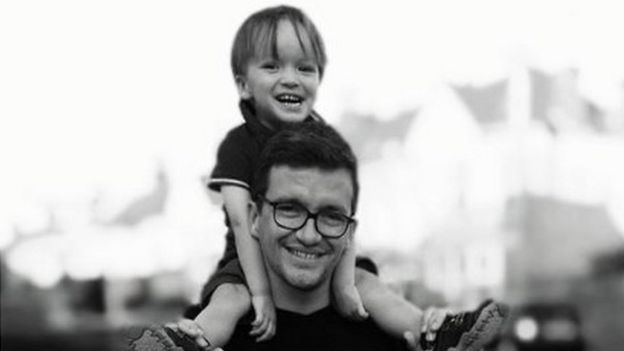This week is sign language week in the UK. As debate continues about whether British Sign Language should be taught in schools, See Hear series producer William Mager reflects on what signing means to him.
I’m not a native sign language user. I didn’t grow up signing from an early age and I didn’t have any deaf friends as a kid. I went to a mainstream school where I was the only deaf child in class but I could get by with speaking and lip-reading.
But if a deaf person had met me 20 years ago, they would have been shocked at my inability to communicate with them.
Learning sign language changed all that and brought many benefits to my life.
In my early 20s, I took my first tentative steps into the deaf world in London. Deaf people would gather at pubs in train stations every month to chat away in sign language, knock one another’s pints over and terrify the bar staff caught unawares by a sudden invasion of a seemingly alien race who communicated mostly through their hands.

I would go to these gatherings and try to communicate. I could use some basic gestures and spoke clearly so people could lip-read, but I wasn’t a signer in any way, shape or form and I think they often just humoured me.
Then one Friday evening, at one of these nights in a pub in Victoria, I saw a beautiful blonde girl chatting to a friend in sign language. I nudged him and asked who she was. He looked at her, then back at me, and shook his head. “No chance.”
But I persevered and at the third time of asking we struck up a conversation and one thing led to another.
But communication was difficult. She couldn’t lip-read me, and although she spoke, she also liked to sign. We spent long evenings together, her teaching me the finger-spelling alphabet, the basic signs for what, how, where, why and when and how to use facial expressions with signs.
As our communication improved, so did our relationship. But I still wasn’t a perfect signer.

Soon after, a job came up which involved making deaf information videos for the British Deaf Association.
The interview was a shambles – I sat opposite two interviewers, one deaf, one hearing, and an interpreter.
The deaf interviewer would sign his questions to me and make eye contact. I replied in speech. The interpreter would start to translate my answers into sign language, and the deaf man looked away from me to the interpreter.
Every time he broke eye contact with me I stopped talking. It was a long and painful interview – but I got the job.
On my first day, he took me upstairs to my desk and pointed to my computer, then to my phone. I shook my head in bewilderment. He had assumed that because I didn’t sign I had enough hearing to use the phone.
A few days later, he signed me up for level one sign language classes.
I was the only deaf person in the class and the look on the deaf teacher’s face when I walked in was a picture – he was used to teaching basic sign language to relatives or colleagues of deaf people, so he must have wondered what was going on.
As we painstakingly finger-spelled our names to one another, I felt like an idiot. But I learned about storytelling, grammar, signs for the weather, how to hold a basic conversation and, finally, things clicked.
Sign language will never be my first language, but I’m so glad I have access to it. I can watch the videos that people post on social media and I can use it to speak to hundreds of people in a crowded room.
I have only one regret – that I came to sign language relatively late in life. Looking back at my childhood, interpreters would have been hugely helpful in the classroom and for socialising with other deaf people. To be able to fingerspell would have helped me with the more complicated words in geography lectures.

There is no downside to learning sign language, whether you’re deaf or hearing. It enriches your life and makes you a better communicator. It has a beauty and grace that cannot be put into words.
It was too late for me, but maybe it’s not too late for other deaf children who are just starting out in school, surrounded by hearing children.
That cute blonde that I saw in the pub 15 years ago is now my wife, and we have a beautiful boy, who is hearing. But I’d love sign language to be taught in his school.
Produced by Beth Rose
See Hear, the long-running programme for deaf people, can be seen on the first Wednesday of every month on BBC Two at 08:00

